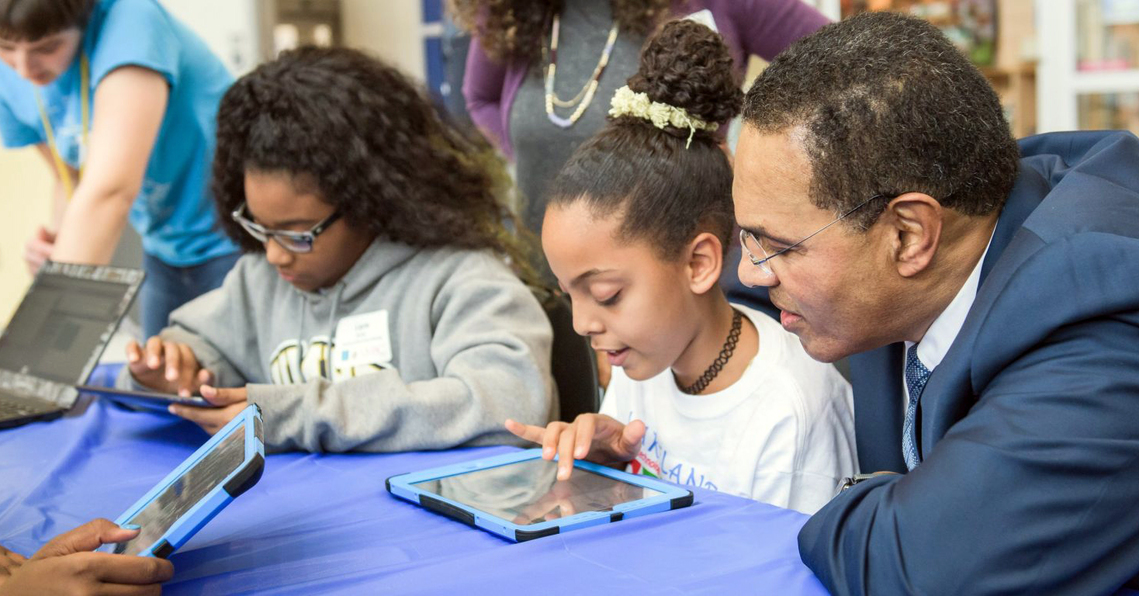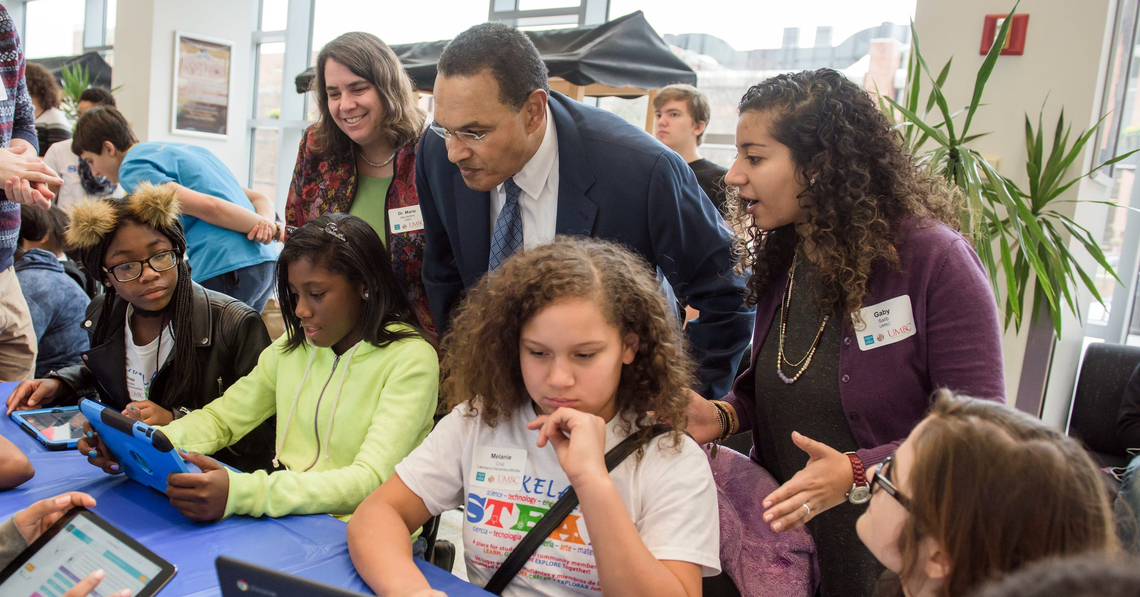
At one table, thirteen Lakeland Elementary/Middle School students from Baltimore used tablets to create patterns of colorful shapes through code. At another station, the students composed music and played games on laptops by completing circuits connected to bananas and celery.
The scene in UMBC’s Commons last Thursday was just what Gabrielle Salib ‘17, interdisciplinary studies, had hoped for. “Our world is quickly becoming more automated and by learning how to code, as President Obama has said, we ‘become the creators rather than just the consumers’ of our ever-growing tech society,” shared Salib. She is president of UMBC’s Computer Science Education student organization, which organized the event as part of the international Hour of Code movement
UMBC joined thousands of schools around the world in hosting Hour of Code events to celebrate Computer Science Education Week, drawing both UMBC students and younger area students to learn about circuits, coding, and computing through hands-on activities.
“Hour of Code events are a great way to gain visibility and awareness of the importance of CS for All,” said Marie desJardins, COEIT associate dean and professor of computer science, and faculty advisor of the Computer Science Education student organization. “It’s especially important to reach out to young women and minority students in their critical middle school years, and to connect them with peers and role models they can relate to.”
“The Hour of Code day is especially important for our Technovation Club because two days a week our girls spend two hours learning how to code and how to develop their own apps,” said Acacia Asbell, a project director for UMBC’s Sherman STEM Teacher Scholars Program who works closely with Lakeland Elementary School. “This event really reinforces how important coding is, and how they can have an impact on the world around them.”
The Lakeland Elementary School students were not the only ones to gain valuable experience from the event. “Our student volunteers also benefited by increasing their own confidence in their skills, connecting with other students and faculty, and knowing that they are making a difference in the world around them,” said desJardins.
 Dr. Marie desJardins, President Freeman Hrabowski, and Gabrielle Salib ’17, interdisciplinary studies, working with Lakeland Elementary/Middle School students at the Hour of Code.
Dr. Marie desJardins, President Freeman Hrabowski, and Gabrielle Salib ’17, interdisciplinary studies, working with Lakeland Elementary/Middle School students at the Hour of Code.
One major challenge with engaging young student in coding is the intimidation factor, UMBC President Freeman Hrabowski told The Baltimore Sun, at the event. He noted that Hour of Code events give hands-on experience that removes that barrier and encourages young students to pursue college degrees and careers in technical fields.
For Salib, that hands-on experience is core to bringing home the point that anyone can code, and that coding can open doors to creative careers.“I had some students tell me that coding was much more fun than they thought it’d be,” she said. “That was precisely the purpose of our event: to show the UMBC community that they, too, can code!”
Read “City students get early exposure to computer careers at UMBC” in The Baltimore Sun.
Adapted from an article on UMBC News by Megan Hanks
The post In Hour of Code, UMBC students give Baltimore youth hands-on intro to computing careers appeared first on Department of Computer Science and Electrical Engineering.